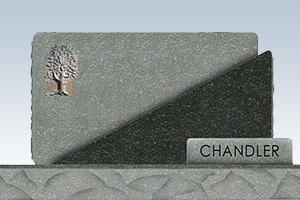 There are many types of granite found all over the earth but very few memorial quality deposits. The proper amount of molten mixing of the correct mineralogical components and then a slow cooling over many thousands of years can create deposits where memorial grade granites may be quarried.
There are many types of granite found all over the earth but very few memorial quality deposits. The proper amount of molten mixing of the correct mineralogical components and then a slow cooling over many thousands of years can create deposits where memorial grade granites may be quarried.
In most cases, even the best quarries provide only 10 to 30 percent of memorial quality granite. The rest of the usable material is fabricated in to other less demanding purposes such as building cladding, counter tops and tiles and pavers.
Fractures, color imperfections and other flaws require that over 2/3 of the quarried granite must be discarded.
There are three basic kinds of rocks on earth.
- Igneous – This rock was first a molten substance. Granite is an igneous rock.
- Sedimentary – This rock was formed from the undersea sediment of shells, bones and other such matter. Limestone is a sedimentary rock.
- Metamorphic – The name of this rock implies a change of form after creation. Intense pressure and heat over millions of years transforms sedimentary rock into metamorphic rocks like marble.
Granite is made up of 3 major elements.
- Feldspar, the main ingredient
- Quartz, the hardest ingredient
- Biotite or mica
Density and Durability of Granite
According to the Measures of Hardness Scale (MOHS), diamonds are rated at 10 and are the hardest materials on earth. Quartz is approximately 7 and natural granite is somewhere between 6 and 7 on the scale. Man-made granite is around 5 and various marbles test about 3. Hard plastic is close to 2. Most people equate marble to granite but as you can see granite is considerably harder than marble.
Another durability factor to consider is density. A cubic foot (12” x 12” x 12”) of granite weighs from 185 lbs to 220 lbs depending on its constituents while a cubic foot of marble will weigh about 170 lbs. Granite molecules may be heavier and are packed more tightly together than marble molecules. Because of its hardness and density granite is much harder to cut, polish and carve than marble.
Why Are There So Many Marble Monuments?
Many older cemeteries from the 1850’s through the 1940’s are filled with monuments made of marble because it was less expensive to cut, polish and carve with the tools of that time. Unfortunately, this is why many of those old marble memorials are nearly unreadable today—while granite memorials from the same time, are easily read and show almost no deterioration.
Certain conditions (salt, hydrocarbon and sulfur dioxide pollution) contribute to the decomposition of the calcite structure of marble and allow it to be eroded rather rapidly. Some marbles are more durable than others. Also, dry, rural areas (without major automobile and industrial pollution) are less damaging to marble.
Marble was used almost exclusively before the 1920’s. Then, gradually, better tools and techniques—wire saws, sandblast carving, carbide and diamond tools—allowed more efficient quarrying, cutting, polishing and carving of the harder granite. Today granite has proven the most durable and is the preferred choice of most customers for cemetery headstones.

